
Demonstrators shout "shame on you" as LAPD blocks off street intersections on Sunday June June 8, 2025. (Image credit: Michelle Zacarias)
Over the past week, protests have erupted across Southern California following a series of Immigration and Customs Enforcement (ICE) raids. Residents and community members showed up to defend neighbors who were being targeted by immigration sweeps.
The demonstrations began last Friday afternoon and have continued without any signs of stopping. The response has been widespread, with thousands taking to the streets in neighborhoods like Paramount and downtown L.A. Protesters, many of whom come from immigrant backgrounds, have organized marches to express their opposition to the raids and the militarization of their communities.
In the face of escalating federal immigration enforcement, however, Los Angeles has emerged as a beacon of resistance. Southern California residents have come out in droves, demonstrating how grassroots activism and community solidarity can challenge authoritarian policies.

Following widespread ICE raids across the city protesters demonstrate in downtown Los Angeles, June 8, 2025. (By Semantha Raquel Norris courtesy of the San Fernando Valley Sun/el Sol)
Over the last decade, I’ve reported on civil uprisings across the country. I have witnessed how even in the darkest of moments, the power of a united people is stronger than any oppressive entity. In the previous week, I stood shoulder to shoulder with demonstrators as we were tear-gassed, brutalized and kettled by the LAPD. And throughout moments of fear and uncertainty, I felt the most protected by the people who were handing out masks and giving water to dehydrated and injured demonstrators.
Yet despite these challenges, an unwavering solidarity with immigrant communities in Southern California is laying the groundwork for a larger national movement. Cities such as New York, Chicago, Minneapolis and Houston are following suit with their own mass mobilization efforts. The L.A. I’ve witnessed is not a “war zone,” it is a breeding ground for revolution; it is the blueprint for resistance.
To be clear, I was not born or raised in L.A., so I can understand why outsiders succumb to the manufactured narratives often pushed by the media. I grew up learning about the 1992 Los Angeles riots and how they resulted in six days of “looting and arson.” But it wasn’t until I watched the infamous Rodney King video and read about the acquittal of the LAPD officers who beat King that it put the reality into perspective for me. The outrage and righteous anger stemmed not from a single incident, but from a breaking point in response to a broader system of injustice.
The President of the United States has portrayed Los Angeles as descending into anarchy. During a recent press conference, he claimed the city would be “burning” if not for the deployment of the National Guard in response to ongoing protests. “These are paid insurrectionists, these are paid troublemakers,” he said, referring to the Los Angelenos who have taken to the streets.

Protestors gather in front of L.A. City Hall on Sunday June 8, 2025 to speak out against immigrations sweeps throughout Southern California. (Image credit: Michelle Zacarias)
The media has played no small role in broadcasting and streaming the sensationalized footage of burning Waymo vehicles, vandalized police cars and streets covered in graffiti. However, it is those same images that have become striking symbols of resistance against an authoritarian administration enacting violence upon immigrant communities.
While viral images of masked protesters waving Mexican flags often dominate public attention, it is the quieter, more localized acts of resistance that have posed significant challenges for federal agents.
Small groups of activists, like the residents who chased ICE out of the AC Hotel in Pasadena, have proven to be extremely effective. Similarly, Santa Ana residents clashed with federal agents in Orange County this week after reportedly blocking ICE transportation vehicles.
One thing is apparent: the people of Los Angeles are resilient.
That is not to say that organizing is a perfect process. At times, rallies can appear disjointed, sometimes lacking clear leadership or a unified strategy. This is to be expected in a county of almost 10 million residents. Yet ironically, this very dysfunction has served as a tactical advantage, complicating efforts by federal agents to track or anticipate actions.
From Paramount to Chinatown to Long Beach, each demonstration has reflected its own unique strategy and spirit. Some have felt tense and confrontational; others more like a neighborhood carne asada—lively, communal, filled with music and inspirational chants.
In some cases, demonstrations are a place of learning. For those who haven’t previously been on the frontlines, the recent string of protests has served as a crash course in activism to new faces in the movement, both young and old.

Demonstrator holds up at "Deport ICE" sign at the downtown rally on June 8, 2025. (Image credit: Michelle Zacarias)
Local organizations have played a big role in educating and mobilizing the masses to protect immigrant communities. The Community Self-Defense Coalition, comprising over 60 groups, has been at the forefront of warning residents of ICE activity and informing people of their rights. Meanwhile, grassroots collectives such as Jail Support LA mobilize community aid for detained protesters and connect individuals with crucial legal resources.
Despite the many challenges that lay ahead of us, L.A. continues to set an example of how communities can resist authoritarianism through collective action and unwavering solidarity. The ongoing protests serve as a reminder that the fight for justice is far from over.
Nonwithstanding the challenges that lie ahead, residents of Southern California continue to set a powerful example of how communities can resist authoritarianism through collective action and solidarity. The protests unfolding across the city are not just moments of defiance—they are reminders that “solo el pueblo salva al pueblo," that we as a community keep each other safe.

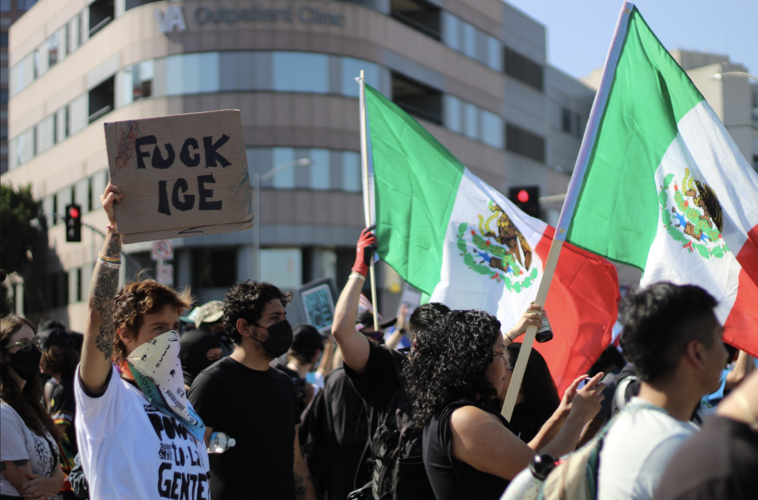
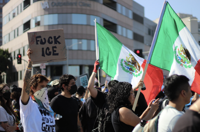

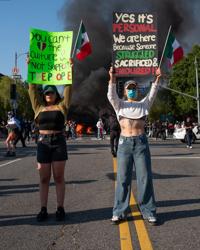

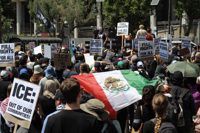



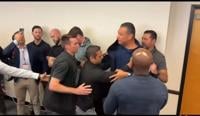

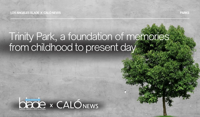

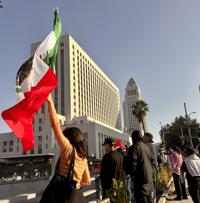


(0) comments
Welcome to the discussion.
Log In
Keep it Clean. Please avoid obscene, vulgar, lewd, racist or sexually-oriented language.
PLEASE TURN OFF YOUR CAPS LOCK.
Don't Threaten. Threats of harming another person will not be tolerated.
Be Truthful. Don't knowingly lie about anyone or anything.
Be Nice. No racism, sexism or any sort of -ism that is degrading to another person.
Be Proactive. Use the 'Report' link on each comment to let us know of abusive posts.
Share with Us. We'd love to hear eyewitness accounts, the history behind an article.